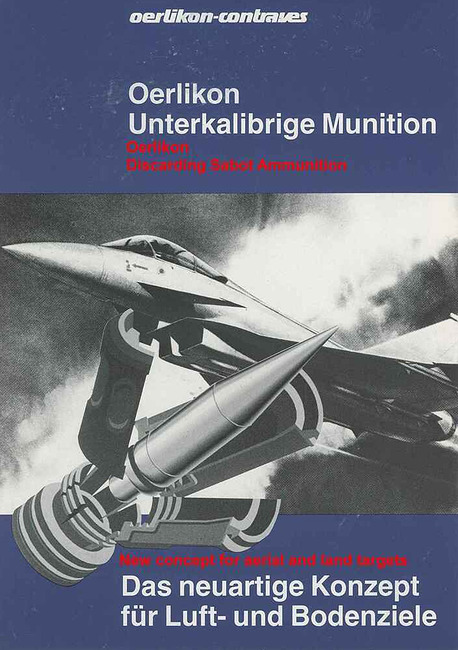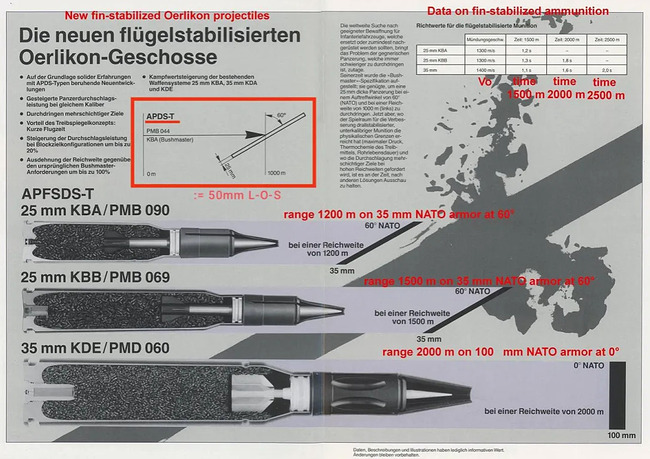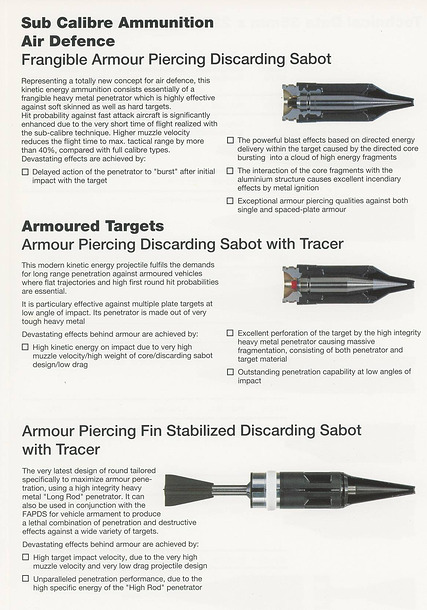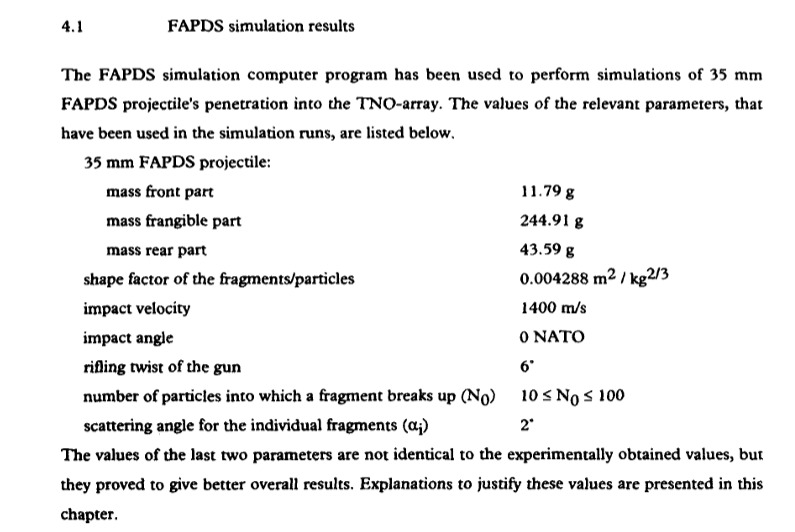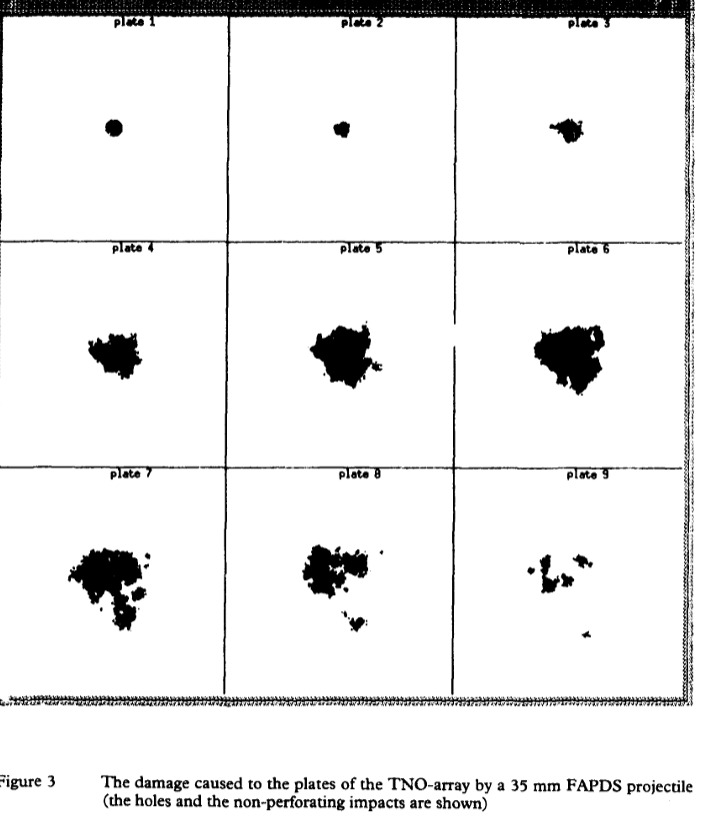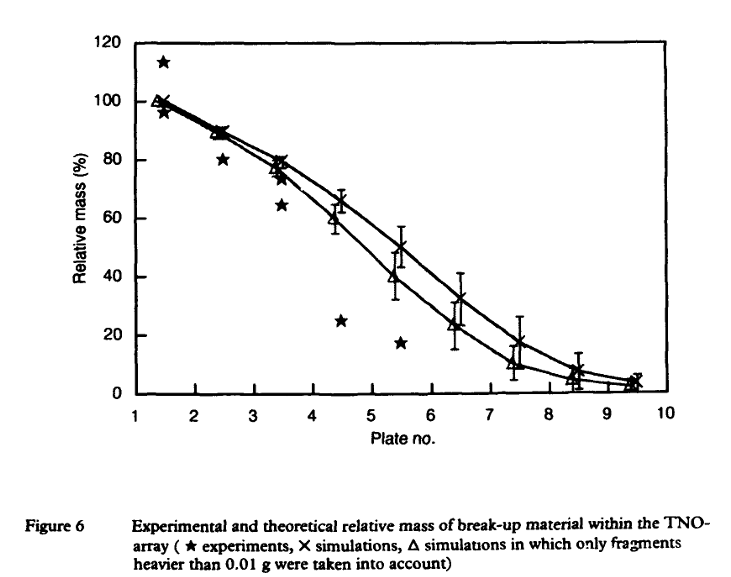Oh man, a lot to unpack here…
First of all, the penetrator breaking apart is intended, (hence why it is called “Frangible”) however the penetration compared to APDS not reduced by much, in fact, for the initially struck plate, it is virtually identical.
Here is a report on how FAPDS works and how the penetration of its’ fragments was calculated;
Adding the previous two pages from the Oerlikon Sub-Calibre Ammunition brochure here, so it can be referenced to more easily.
^This page of the “Oerlikon sub-calibre ammunitions” brochure focuses on FAPDS’ effect on aircraft (which feature airframes/platings of light alloy metals, such as avional) and how, despite of FAPDS being a sub-calibre AP round, it still has significant effects, even inside a lightly armoured target. (which APDS e.g. doesnt - its’ effect is much more localized)
It is also supposed to showcase how the frangible penetrator works, i.e. that it stays intact for the first few plates and then continuously breaks apart the further it goes - not how high the penetration against thick platings is.
Here you ignored that the first 2mm aluminium plate is inclined at 70°, which results in a L-O-S thickness of 5.85mm. It is also visible that the penetrator did not significantly break apart prior to ATLEAST the 300mm gap between the second and third plate.
I recall having a pentration-chart of 35mm PMD-055 saved somewhere, but I’ll have to check once I am home.
Thus, I will use 25mm APDS / FAPDS as example instead - as it should be sufficient to outline how your assumption (that FAPDS cannot have anywhere near identical penetrative performance compared to APDS) is not accurate;
Note: The following page is from the same Oerlikon brochure
Here the brochure lists a penetration of 25mm RHA at 1000m, 60° NATO for 25mm APDS-T (KBA)
Now let’s compare it to the penetration figures 25mm FAPDS-T (KBA)
And as we can see, despite of the round being FAPDS-T, the penetration is listed with an identical figure.
Note: RWM Schweiz (along with Rheinmetall Air Defence) was Oerlikon previously.
Checking Rheinmetalls website today is not going to help you much, since they no longer offer the KDA platform, as it has been replaced by the 35mm KDC and KDG cannons, which use AHEAD (KE-TF/ABM) for anti-air purposes and thus have no reason to use the outdated FAPDS shell/concept for it.
FAPDS for anti-air purposes was only(1) used on Gepard 1A2 in 1994-2016 and the concept not pursued after due to better alternatives (KE-TF), hence why the AA-purpose is no longer listed (PMD-055 itself is not listed either, nor is the KDA, so I honestly don’t know how that is an indication for anything…?).
(1) Correction: Also used on the polish “gepard” and might be used by other countries operating the Gepard 1A2 variant - though aside from poland, idk if any other nation actually uses FAPDS currently.
You can also consult this 1994 oerlikon brochure, which lists both the high penetrative capabilites aswell as the dual-purpose use against armoured aswell as airborne targets.
Additionally, there is a training-video on the NDV to Gepard 1A2, which also briefly talks about FAPDS (DM 33) and how it is to replace all currently serviced ammunition-types (Including APDS-T, DM 23)
(Timestamped)
